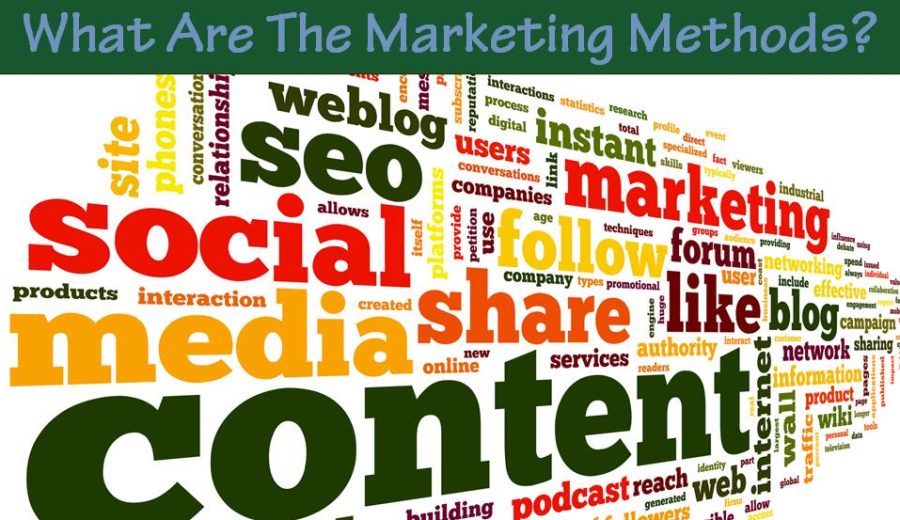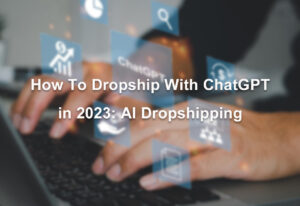Advertising or Marketing is a big part of your business, and it’s important to know all the options that are available to you. Advertising allows you to reach potential clients and customers all over the world and can help build your brand while driving growth. The following will introduce the 12 essential marketing methods to help you gain an audience.
This includes Email Marketing, Content Marketing, Social Media Marketing, Word-of-Mouth Marketing, Experience Marketing, Search Engine Marketing, Event Marketing, Relationship Marketing, Personalized Marketing, Cause Marketing, Co-Branding Marketing, and Promotional Marketing.
1. Email Marketing
Many large-scale businesses use email marketing as the most direct and effective way to connect with customers. You can send emails that contain various types of content to a list of subscribers, such as information about sales, discounts, coupon codes, product sales and so on.
This content can serve to generate website traffic, leads, or even product sign-ups for a business. Effective marketing emails can convert prospects into customers, and turn one-time buyers into loyal, raving fans. At industry trade shows, IBM consultants can often be seen exchanging email information with their prospects. And there are reports that show email has the highest ROI of any marketing channel available.
2. Content Marketing
Content marketing is great for generating buzz. It involves the creation and distribution of online material that might not directly promote a specific brand but generate interest for its products or services.
Typically in the world of eCommerce, you tend to see “product review’ videos. However this sort of marketing is not limited to this format, often extending into blogs and social media posts. Although this method will not guarantee conversions it will definitely drive traffic. Which can rank you higher in search engines in the long run while building an audience.
We suggest incorporating this method in the beginning phases of your advertising campaigns. But not the exclusive means of advertising, merely one part in a system as a whole.
3. Social Media Marketing
Every business has a social media account that is always used for marketing its products or services. Facebook, Twitter, Youtube, and Instagram are often the best way to reach your potential customers. Each platform is different and tends to cater to a specific type of content.
On Facebook, blogs are key content. On Youtube, video dominates. And on Instagram, pictures win the day. Most social media platforms also have built-in data analytics tools, which enable companies to track the progress and engagement of ad campaigns.
And companies like Southwest Airlines have departments of over 30 people whose primary responsibility is to actively engage with customers on social media.
4. Word-of-Mouth Marketing
Word-of-mouth Marketing is the passing of information from person to person by online and offline communication. The most common cause is when the customer experiences something beyond what’s expected.
Whether that be the product or service itself or an interaction between the business and the customer. You’ll often see the effects of word-of-mouth marketing when a customer shares their experience on social media or a blog post. People like to share, especially things that pertain to their fandom. And many consumers find meaning in sharing stories of their favorite products and services.
A review website that doubles as social proof are also a form of word-of-mouth. It can help you attract and convert more customers.
5. Experience Marketing
Experience marketing is a method that invites consumers to participate in the evolution of a brand through direct engagements. In other words, it refers to the idea of using an actual experience to create a memorable link between the customer and the brand.
Think in terms of the contest, meetups, or an Alternate Reality Game. It is these experiences that ultimately drive brand awareness, loyalty, and emotional attachment. Furthermore, using participatory, hands-on, and tangible branding material, the business can show its customers not just what the company offers, but what it stands for.
6. Search Engine Marketing
Search engine marketing is a digital marketing method used to increase the visibility of a website on search engine results pages. Creating unique, valuable, and data-driven content can make your content more appealing to search engines.
You can also generate massive ROI through search engine optimization. It is efficient to optimize your meta tags, images, and other on-page elements so that people can find your content through long-tail keywords. It also involves PPC advertising which is the process of gaining website traffic by purchasing ads on search engines and is paid by click.
7. Event Marketing
Event marketing is when a business develops a themed exhibit, display, or presentation to promote a product, service, cause, or organization by leveraging in-person engagement.
Developing events is a great way to gain attention and drive sales and it has a good communicating effect. Customers often need a reason to shop and events can often offer the perfect reason. Events can occur online or offline and can be participated in, hosted, or sponsored.
8. Relationship Marketing
Relationship marketing focuses on building relationships with its customers and having long-term customer engagement. It is less transactional than traditional marketing methods.
It’s not laser-focused on closing one sale or making one conversion. The goal of relationship marketing is to create strong, even emotional, customer connections to a brand that can lead to ongoing business, free word-of-mouth promotion, and information from customers that can generate leads.
Customers who love your brand more and have brand loyalty will also spend more money with your brand.
9. Personalized Marketing
Personalized marketing, also known as one-to-one marketing or individual marketing, is to provide product differentiation or deliver individualized messages to different customers according to their demands or preference.
Personalization tries to make a unique offering for each customer. Personalized marketing is the most focused form of targeted marketing rather than appealing to a broad demographic or audience. The goal of it is to truly engage customers or prospective customers by communicating with each individual.
This method tends to work best on big-ticket items or services and usually works in tandem with relationship marketing.
10. Cause Marketing
Cause marketing strategy requires a partnership that benefits both parties. It not only helps non-profits and worthwhile causes but also helps brands differentiate and drive business.
It is a type of corporate social responsibility, in which a company’s promotional campaign has the dual purpose of increasing profitability while bettering society. That’s to say, profit-generating, powerful global brands have the resources to raise awareness of nonprofit organizations, while also promoting their product.
A good example of this is Toms Shoes which built a strong customer following and reputation for giving back by giving away a free pair of shoes to someone in need for every shoe purchase made by their customers.
11. Co-Branding Marketing
Co-branding marketing refers to a partnership between two organizations that have common interests and audiences but aren’t direct competitors. They gain access to each other’s followers through co-branding marketing.
It benefits both the brands more when they come together, rather than when they are promoted individually. It can be an effective way to build the business, boost awareness, and break into new markets.
12. Promotional Marketing
Promotional marketing is designed to stimulate a customer into making a purchase. It includes various incentives such as temporary discounts, coupons, and up-sales.
The goal of promotional marketing is to increase its appeal to generate a sale. And promotional marketing has the advantage of being valuable to both new customers and existing customers. It offers new customers a reason to try the product for the first time while building loyalty in existing customers.







